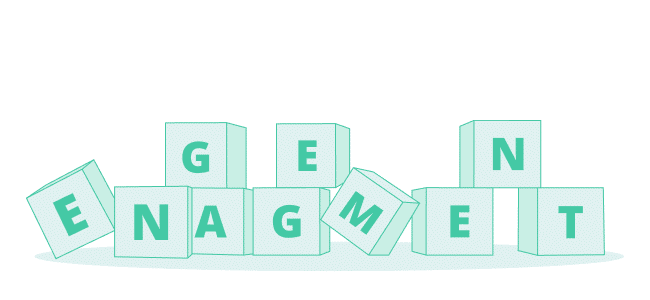Are you faced with having to start an engagement survey?
Then it is a completely unavoidable part of the process that you first of all decide when the study is a success.
Without a set goal, you can quickly find yourself groping blindly for what you really want to achieve with the effort.
One of the parameters you can set your mind on is how high a response rate you want to achieve in your measurement – so that the measurement can be characterized as being a success and can be called representative.
How high should the response rate be?
How high the response rate should be depends on several factors.
For a large company with more than 200 employees, it can of course be difficult to reach the high end of the 80-90%.
Here it will be relevant to look at how high a response rate you want per department most of all, so that, for example, you not only have a nice response rate of 79% overall, but then you are left with individual departments where the response rate is completely down and kiss them around only 20%.
If, on the other hand, it is a company with 20 employees, a high response rate would be preferable to ensure that the survey in question is representative of the entire company as a whole. At the same time, there will usually not be as many different departments either.
But how can you improve your response rate?
As I said, there are several different parameters you can look at, but if we take our platform, Woba.io, as a starting point, we have some different tools that make it easy to send out reminders to employees who have not yet answered the survey .
But in addition, you can also always – with good effect – ensure that you are proactive in the answering process.
Prepare your employees
So, transparency and open dialogue are the keywords here.
Before a survey is to be carried out, it is a good idea to inform your employees that they will be invited to answer such a survey, the framework it is based on and how the individual employee must answer the survey. It may seem futile, but better too much explanation than too little.
Prepare them for when and where the survey will come from, what format etc. and make sure to emphasize the importance of them actively participating and letting their voice be heard.
And most importantly – explain why this survey is even relevant and why their answers are so important.
Make it more than clear that the well-being surveys are for the employees, to give them an anonymous voice, so that any problems of any nature can be dealt with.
And yes – the handling itself also plays a major role here. Tell the employees that their responses will be taken very seriously and that all well-being issues will be taken very seriously.
Guide the employees out of the setup
When the employees receive the email with the link to the survey, it will be detailed how to get started.
To ensure that the employees are fully on board, you can advantageously send this guide out internally as well, so that they can see how they log in and answer.
At Woba, we have a Help Center where you can find guides and articles, just to pass on to just such a situation.
Avoid the spam filter!
In some cases there is a need for you to ‘whitelist’ e-mails from Woba so that they are not blocked in spam or security settings.
Below is the information you need to check whether you need to whitelist us before starting a survey in Woba:
Invitations and reminders to users are sent from noreply@woba.io
Support emails are sent from support@woba.io
In rare cases, there is a need for our email service to also be whitelisted: smtp.postmarkapp.com
Help the employee – Allow time for the answer
If the employees are to be motivated even more, it is certainly not an unwise investment to release some of the working time for the survey.
Help the employees set aside time in their working day so that they can see the participation a bit like a ‘little break’.
The examinations/measurements do not take much time, and are the perfect match for a cup of coffee in the meantime.
If you have a lot of employees who work out on sites or are constantly on the move, you can combine it with a workshop or an already planned team meeting where everyone is in the office beforehand.
The disturbed brain needs some help!
Yes, our brain can quickly forget – and in particular if we have a lot of other work on our minds.
The phone rings, an urgent email arrives or a colleague just needs to talk a little about his current, difficult divorce.
Disruptions and skipping actions can quickly strain commitment to answering the survey, and therefore it is important that the individual employee receives reminders.
At Woba, for example, reminders can easily be set up, which are automatically sent out to those employees who have not responded in the first place.
However, it is a good idea to supplement with verbal reminders for meetings and to use internal platforms to remind employees about the ongoing investigation.










